12 Kids Who Left Their Parents Red-Faced After Blurting Out Private Family Matters

There are many myths around arguably the greatest structure ever built by humans — the Great Wall of China. Some say it’s so grand that it’s visible from space; others claim that you can see it from as far as the Moon. Other theories suggest that the builders of the wall were left inside.
Sorry to disappoint you, but all these impressive stories are just myths. But even with those stories busted, the Great Wall of China is an impressive and truly breathtaking structure, so let me tell you its true story.
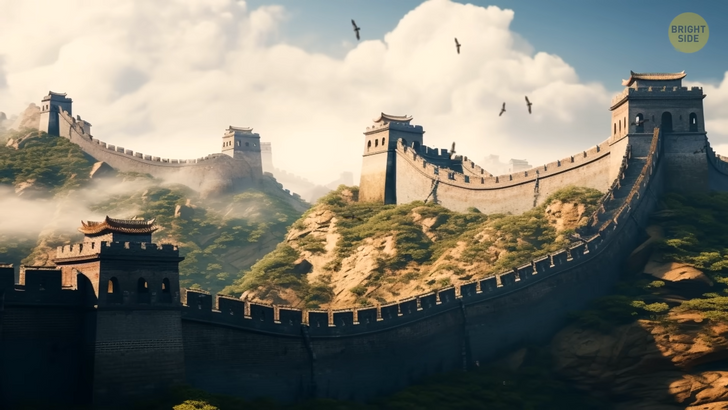
Today, China is one of the most populated countries in the world, counting as many as 1.4 billion residents. It is also one of the oldest nations in the world — it has 3,500 years of continuous written history, but the civilization existed long before that! There is a theory that while the European continent, for example, was most likely reached by humans from Africa, China wasn’t populated by settlers that came from somewhere else. Some people believe that the Chinese civilization was formed by local Stone Age people, who lived on the territory since the prehistoric period.
So now, the Great Wall of China. It’s truly big even by today’s standard — stretching for over 13,000 miles. To imagine it better, it’s almost five times the distance between New York and Los Angeles. Or even a bit greater than the distance between North and South Poles. Even in modern times, people have never built anything close to this big.
Of course, it didn’t take a day to build the Great Wall of China. Two? Keep going. In fact, the wall was being built for centuries. Maybe you know that ancient cities had walls around them to protect themselves from invaders. Yes, Chinese cities had them too. The first Chinese Emperor united the country in 220 BCE and got a brilliant but very ambitious idea: to turn all city walls into one big wall that would defend the country’s border against attacks from the north.
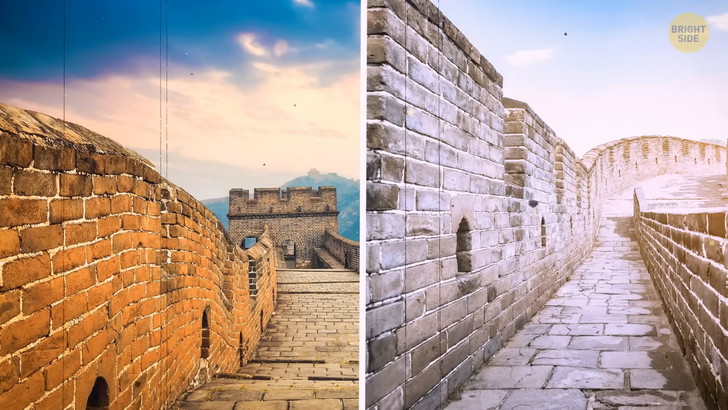
A trusted general directed the construction, enrolling a big group of workers: soldiers, commoners, and convicts. Back then, the wall was built of rammed earth and wood. In some places that were strategically important, the sections of the wall overlapped to provide maximum security. The walls were around 26 feet high, on average.
But the Great Wall didn’t yet look like the construction we know today. Every next emperor would pick up the big wall project, strengthening and extending it, repairing, but also modernizing construction techniques. Some used bricks to build it; some moved on to granite and marble blocks.
Watchtowers and platforms weren’t there from the beginning as well: they were added by Ming emperors. The watchtowers made it possible to communicate with the other parts of the wall through smoke and fire messages. So, the wall is quite inconsistent in terms of material, but it only adds more charm to the construction and shows how much effort and time it took.
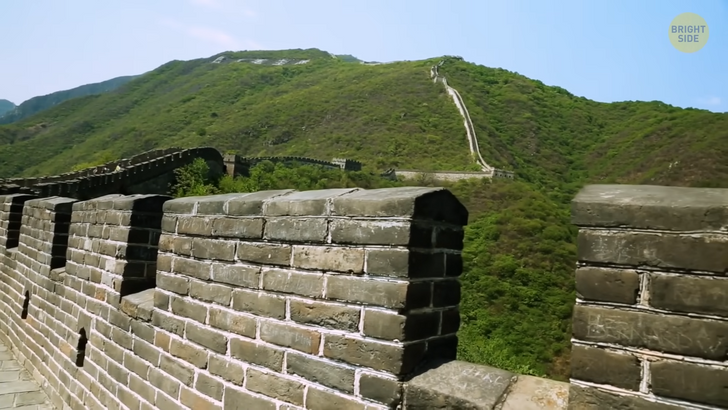
The reason why some parts of the wall have been standing for centuries and are still in good condition is glutinous rice flour. Turns out, this sticky rice mortar is almost like cement — it’s very strong and waterproof, sealing the bricks so tightly together that even sneaky weeds can’t grow between them.
You may also notice that some bricks have writings carved on them — they were left by the workers who were building the wall. The purpose of those writings is quality assurance: they contain such information as location, quantity, and responsible officials. So, in case of some problems with the quality of materials or constructions, it would be known who should be held accountable for it.
Recently, a research group has looked through official historical documents of the Ming Dynasty that ruled China from the 14th to the 17th century. They came across records of secret doors in the Great Wall. So, they decided to find them. They used a flying robot to capture continuous centimeter-resolution photos of the wall. They photographed 90% of the wall that was built during the Ming Dynasty and discovered the remains of over 220 secret doors along the wall. Some of them have a specific width and height that allows only one person to go through. Others are large enough to allow two horses to pass at the same time.
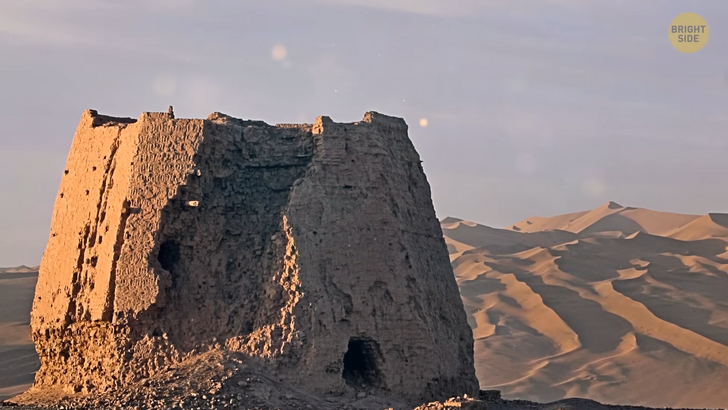
Why are the doors there? The Great Wall’s main goal was to protect the country from the enemy. Building doors that could let the enemy in would undermine the whole point of having a wall. So, of course, the doors were secret passages. They perfectly matched the surroundings topographically, and the exit on the outside was camouflaged with bricks so that it was almost completely indistinguishable from the brick wall.
The wall was never just a defensive wall, and it was never completely closed — it could be opened on demand. It was also a structure used for trade and commerce, communication between inside and outside the wall, and, of course, for defense and spying. Some doors were used for trade with the other side. Through smaller doors, a person would sneak out to spy on the enemy that lived on the other side.
The hidden gates were also useful for a sudden attack. As you remember, some gates were camouflaged with brick on the outside — the exit was so indistinguishable that the enemy had no idea where exactly it was located. The inside entrance for Chinese soldiers was hollow: so they could walk through the wall and break the camouflaged exit gate from the inside, starting their surprise attack.
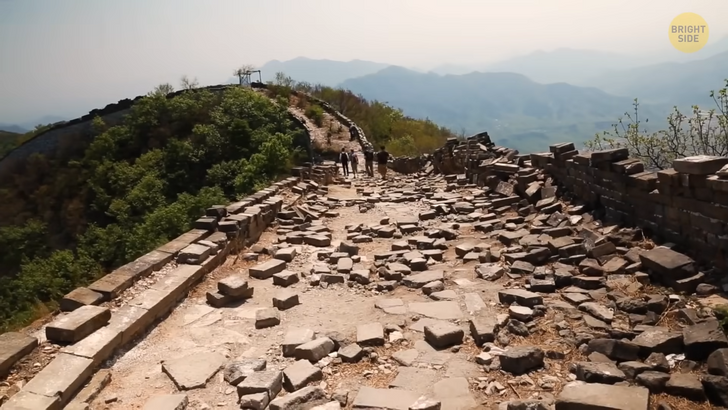
Even though the main point was to prevent outsiders from getting into the city, the wall wasn’t too effective on that matter. It could still be climbed over or marched around. So, the wall was being watched at all times, and guards gave signals to the troops if they saw the enemy approach. Also, the wall provided more time to mobilize and bulk up the country’s forces or lure the enemy troops into a difficult strategic position. The construction stopped at the end of the 19th century — the wall lost its strategic and military importance due to technological advances.
Over the centuries to today, only 8% of the Great Wall is in good condition, and the rest is damaged. Also, around 1/3 of the wall has disappeared without a trace due to both natural erosion and human damage. I guess you could say it’s now just a “pretty good wall”. As you remember, the first parts of the wall were built out of rammed earth and wood. These are not the most unfailing materials if we’re talking about thousands of years. Also, destructive farming methods turned large areas into a desert and contributed to erosion.
Also, many bricks were taken away from the wall in the last century to be used in building farms and houses. The wall is being deconstructed stone by stone even today, but this time, by tourists: quite a few of them take a stone as a souvenir. That’s a total of a lot of stones, considering that over 10 million tourists visit the Great Wall every year.

Since 1987, the wall has been a UNESCO World Heritage Site, highlighting that it has an outstanding importance to humanity. The wall is one of China’s 56 world heritage sites —2nd place among countries with landmarks protected by UNESCO. Who’s first, you ask? The top spot, with 58 world heritage sites, belongs to Italy.
And do you know that the wall isn’t only a famous tourist attraction, but also the location of the Great Wall marathon? It’s a marathon that was established in 1999 and is one of the most challenging ones in the world. You guessed it right — people run along the wall, including all the steps. There are three distances, so the participants can run a full marathon that is 26 miles, a half-marathon that’s 13 miles, or just have a fun run of 5 miles.











